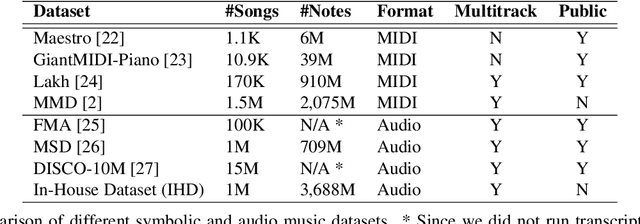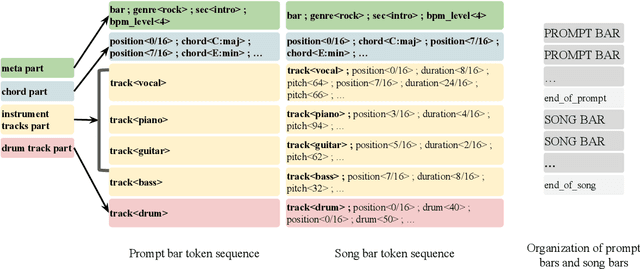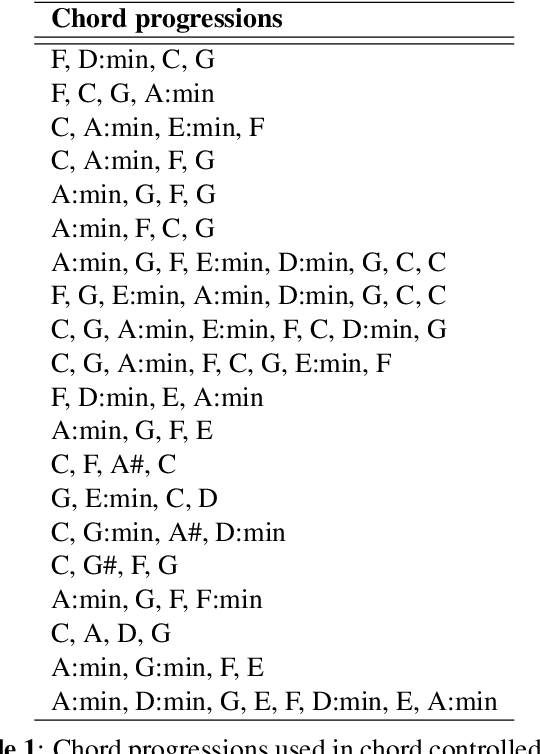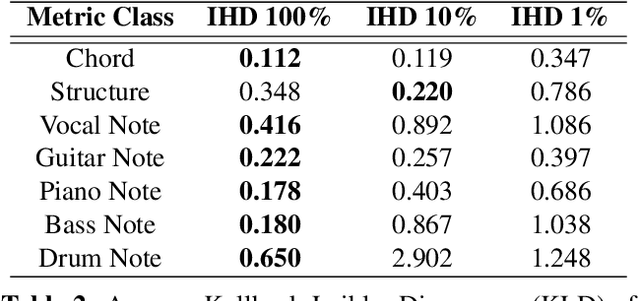Haonan Chen
University of Waterloo
Tool-as-Interface: Learning Robot Policies from Human Tool Usage through Imitation Learning
Apr 06, 2025Abstract:Tool use is critical for enabling robots to perform complex real-world tasks, and leveraging human tool-use data can be instrumental for teaching robots. However, existing data collection methods like teleoperation are slow, prone to control delays, and unsuitable for dynamic tasks. In contrast, human natural data, where humans directly perform tasks with tools, offers natural, unstructured interactions that are both efficient and easy to collect. Building on the insight that humans and robots can share the same tools, we propose a framework to transfer tool-use knowledge from human data to robots. Using two RGB cameras, our method generates 3D reconstruction, applies Gaussian splatting for novel view augmentation, employs segmentation models to extract embodiment-agnostic observations, and leverages task-space tool-action representations to train visuomotor policies. We validate our approach on diverse real-world tasks, including meatball scooping, pan flipping, wine bottle balancing, and other complex tasks. Our method achieves a 71\% higher average success rate compared to diffusion policies trained with teleoperation data and reduces data collection time by 77\%, with some tasks solvable only by our framework. Compared to hand-held gripper, our method cuts data collection time by 41\%. Additionally, our method bridges the embodiment gap, improves robustness to variations in camera viewpoints and robot configurations, and generalizes effectively across objects and spatial setups.
Learning Coordinated Bimanual Manipulation Policies using State Diffusion and Inverse Dynamics Models
Mar 30, 2025Abstract:When performing tasks like laundry, humans naturally coordinate both hands to manipulate objects and anticipate how their actions will change the state of the clothes. However, achieving such coordination in robotics remains challenging due to the need to model object movement, predict future states, and generate precise bimanual actions. In this work, we address these challenges by infusing the predictive nature of human manipulation strategies into robot imitation learning. Specifically, we disentangle task-related state transitions from agent-specific inverse dynamics modeling to enable effective bimanual coordination. Using a demonstration dataset, we train a diffusion model to predict future states given historical observations, envisioning how the scene evolves. Then, we use an inverse dynamics model to compute robot actions that achieve the predicted states. Our key insight is that modeling object movement can help learning policies for bimanual coordination manipulation tasks. Evaluating our framework across diverse simulation and real-world manipulation setups, including multimodal goal configurations, bimanual manipulation, deformable objects, and multi-object setups, we find that it consistently outperforms state-of-the-art state-to-action mapping policies. Our method demonstrates a remarkable capacity to navigate multimodal goal configurations and action distributions, maintain stability across different control modes, and synthesize a broader range of behaviors than those present in the demonstration dataset.
Towards Uncertainty Unification: A Case Study for Preference Learning
Mar 25, 2025Abstract:Learning human preferences is essential for human-robot interaction, as it enables robots to adapt their behaviors to align with human expectations and goals. However, the inherent uncertainties in both human behavior and robotic systems make preference learning a challenging task. While probabilistic robotics algorithms offer uncertainty quantification, the integration of human preference uncertainty remains underexplored. To bridge this gap, we introduce uncertainty unification and propose a novel framework, uncertainty-unified preference learning (UUPL), which enhances Gaussian Process (GP)-based preference learning by unifying human and robot uncertainties. Specifically, UUPL includes a human preference uncertainty model that improves GP posterior mean estimation, and an uncertainty-weighted Gaussian Mixture Model (GMM) that enhances GP predictive variance accuracy. Additionally, we design a user-specific calibration process to align uncertainty representations across users, ensuring consistency and reliability in the model performance. Comprehensive experiments and user studies demonstrate that UUPL achieves state-of-the-art performance in both prediction accuracy and user rating. An ablation study further validates the effectiveness of human uncertainty model and uncertainty-weighted GMM of UUPL.
MetaFold: Language-Guided Multi-Category Garment Folding Framework via Trajectory Generation and Foundation Model
Mar 11, 2025Abstract:Garment folding is a common yet challenging task in robotic manipulation. The deformability of garments leads to a vast state space and complex dynamics, which complicates precise and fine-grained manipulation. Previous approaches often rely on predefined key points or demonstrations, limiting their generalization across diverse garment categories. This paper presents a framework, MetaFold, that disentangles task planning from action prediction, learning each independently to enhance model generalization. It employs language-guided point cloud trajectory generation for task planning and a low-level foundation model for action prediction. This structure facilitates multi-category learning, enabling the model to adapt flexibly to various user instructions and folding tasks. Experimental results demonstrate the superiority of our proposed framework. Supplementary materials are available on our website: https://meta-fold.github.io/.
mmE5: Improving Multimodal Multilingual Embeddings via High-quality Synthetic Data
Feb 12, 2025Abstract:Multimodal embedding models have gained significant attention for their ability to map data from different modalities, such as text and images, into a unified representation space. However, the limited labeled multimodal data often hinders embedding performance. Recent approaches have leveraged data synthesis to address this problem, yet the quality of synthetic data remains a critical bottleneck. In this work, we identify three criteria for high-quality synthetic multimodal data. First, broad scope ensures that the generated data covers diverse tasks and modalities, making it applicable to various downstream scenarios. Second, robust cross-modal alignment makes different modalities semantically consistent. Third, high fidelity ensures that the synthetic data maintains realistic details to enhance its reliability. Guided by these principles, we synthesize datasets that: (1) cover a wide range of tasks, modality combinations, and languages, (2) are generated via a deep thinking process within a single pass of a multimodal large language model, and (3) incorporate real-world images with accurate and relevant texts, ensuring fidelity through self-evaluation and refinement. Leveraging these high-quality synthetic and labeled datasets, we train a multimodal multilingual E5 model mmE5. Extensive experiments demonstrate that mmE5 achieves state-of-the-art performance on the MMEB Benchmark and superior multilingual performance on the XTD benchmark. Our codes, datasets and models are released in https://github.com/haon-chen/mmE5.
Chain-of-Retrieval Augmented Generation
Jan 24, 2025



Abstract:This paper introduces an approach for training o1-like RAG models that retrieve and reason over relevant information step by step before generating the final answer. Conventional RAG methods usually perform a single retrieval step before the generation process, which limits their effectiveness in addressing complex queries due to imperfect retrieval results. In contrast, our proposed method, CoRAG (Chain-of-Retrieval Augmented Generation), allows the model to dynamically reformulate the query based on the evolving state. To train CoRAG effectively, we utilize rejection sampling to automatically generate intermediate retrieval chains, thereby augmenting existing RAG datasets that only provide the correct final answer. At test time, we propose various decoding strategies to scale the model's test-time compute by controlling the length and number of sampled retrieval chains. Experimental results across multiple benchmarks validate the efficacy of CoRAG, particularly in multi-hop question answering tasks, where we observe more than 10 points improvement in EM score compared to strong baselines. On the KILT benchmark, CoRAG establishes a new state-of-the-art performance across a diverse range of knowledge-intensive tasks. Furthermore, we offer comprehensive analyses to understand the scaling behavior of CoRAG, laying the groundwork for future research aimed at developing factual and grounded foundation models.
Little Giants: Synthesizing High-Quality Embedding Data at Scale
Oct 24, 2024Abstract:Synthetic data generation has become an increasingly popular way of training models without the need for large, manually labeled datasets. For tasks like text embedding, synthetic data offers diverse and scalable training examples, significantly reducing the cost of human annotation. However, most current approaches rely heavily on proprietary models like GPT-4, which are expensive and inefficient for generating large-scale embedding data. In this paper, we introduce SPEED, a framework that aligns open-source small models (8B) to efficiently generate large-scale synthetic embedding data. Through supervised fine-tuning, preference optimization, and self-improvement, SPEED enables small open-source models to produce high-quality data. Remarkably, SPEED uses only less than 1/10 of the GPT API calls, outperforming the state-of-the-art embedding model E5_mistral when both are trained solely on their synthetic data. Using this efficient generator, we conduct a comprehensive study on how various factors within the alignment pipeline impact data quality and reveal the scaling law for synthetic embedding data.
A Survey of Conversational Search
Oct 21, 2024



Abstract:As a cornerstone of modern information access, search engines have become indispensable in everyday life. With the rapid advancements in AI and natural language processing (NLP) technologies, particularly large language models (LLMs), search engines have evolved to support more intuitive and intelligent interactions between users and systems. Conversational search, an emerging paradigm for next-generation search engines, leverages natural language dialogue to facilitate complex and precise information retrieval, thus attracting significant attention. Unlike traditional keyword-based search engines, conversational search systems enhance user experience by supporting intricate queries, maintaining context over multi-turn interactions, and providing robust information integration and processing capabilities. Key components such as query reformulation, search clarification, conversational retrieval, and response generation work in unison to enable these sophisticated interactions. In this survey, we explore the recent advancements and potential future directions in conversational search, examining the critical modules that constitute a conversational search system. We highlight the integration of LLMs in enhancing these systems and discuss the challenges and opportunities that lie ahead in this dynamic field. Additionally, we provide insights into real-world applications and robust evaluations of current conversational search systems, aiming to guide future research and development in conversational search.
Seed-Music: A Unified Framework for High Quality and Controlled Music Generation
Sep 13, 2024



Abstract:We introduce Seed-Music, a suite of music generation systems capable of producing high-quality music with fine-grained style control. Our unified framework leverages both auto-regressive language modeling and diffusion approaches to support two key music creation workflows: \textit{controlled music generation} and \textit{post-production editing}. For controlled music generation, our system enables vocal music generation with performance controls from multi-modal inputs, including style descriptions, audio references, musical scores, and voice prompts. For post-production editing, it offers interactive tools for editing lyrics and vocal melodies directly in the generated audio. We encourage readers to listen to demo audio examples at https://team.doubao.com/seed-music .
SymPAC: Scalable Symbolic Music Generation With Prompts And Constraints
Sep 04, 2024



Abstract:Progress in the task of symbolic music generation may be lagging behind other tasks like audio and text generation, in part because of the scarcity of symbolic training data. In this paper, we leverage the greater scale of audio music data by applying pre-trained MIR models (for transcription, beat tracking, structure analysis, etc.) to extract symbolic events and encode them into token sequences. To the best of our knowledge, this work is the first to demonstrate the feasibility of training symbolic generation models solely from auto-transcribed audio data. Furthermore, to enhance the controllability of the trained model, we introduce SymPAC (Symbolic Music Language Model with Prompting And Constrained Generation), which is distinguished by using (a) prompt bars in encoding and (b) a technique called Constrained Generation via Finite State Machines (FSMs) during inference time. We show the flexibility and controllability of this approach, which may be critical in making music AI useful to creators and users.
 Add to Chrome
Add to Chrome Add to Firefox
Add to Firefox Add to Edge
Add to Edge